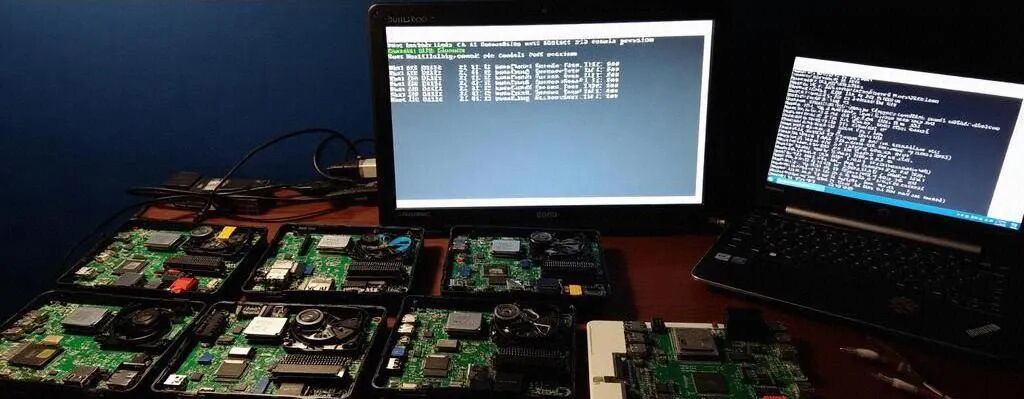Detailed Configuration of Embedded Linux Buildroot Environment: Building an Efficient and Stable Development Platform
Introduction
Buildroot is a powerful tool for building embedded Linux systems, enabling developers to quickly create small and efficient embedded Linux systems. This article will provide a detailed guide on how to use Buildroot to construct a customized embedded Linux development environment, including toolchain configuration, root filesystem customization, and package management.

Hardware and Software Requirements
Hardware Requirements:
- x86_64 host (8GB RAM or more)
- SSD storage (at least 100GB of available space)
- Stable internet connection
- Target development board (this article uses ARM64 architecture as an example)
Software Requirements:
- Host operating system: Ubuntu 22.04 LTS
- Buildroot 2023.08.2
- Git 2.x
- GNU Make 4.x
- Configuration tool (ncurses-dev)
Overview of the Development Environment
The Buildroot development environment mainly includes the following components:
- Cross-compilation toolchain
- Linux kernel configuration and compilation
- Root filesystem generation
- Package management system
- Configuration management tools
Preparing the Host Development Environment
# Install Buildroot dependencies
sudo apt-get update
sudo apt-get install -y build-essential git wget cpio unzip \
rsync bc libncurses5-dev libssl-dev python3 python3-pip \
python3-dev python3-setuptools file
# Get Buildroot source code
git clone https://git.buildroot.net/buildroot
cd buildroot
git checkout 2023.08.2
Configuring the Cross-Compilation Toolchain
# Configure Buildroot
make menuconfig
# Select the following configurations:
# -> Target options
# -> Target Architecture (ARM64)
# -> Target Architecture Variant (cortex-A53)
# -> Toolchain
# -> Toolchain type (External toolchain)
# -> Toolchain (Custom toolchain)
Obtaining and Configuring the Kernel Source Code
# Configure Linux kernel options
make linux-menuconfig
# Common kernel configurations:
CONFIG_SMP=y
CONFIG_ARM64=y
CONFIG_CROSS_COMPILE="aarch64-linux-gnu-"
CONFIG_DEFAULT_HOSTNAME="buildroot"
Building the Root Filesystem
# Configure root filesystem options
make menuconfig
# Example filesystem configuration:
BR2_TARGET_ROOTFS_EXT2=y
BR2_TARGET_ROOTFS_EXT2_4=y
BR2_TARGET_ROOTFS_EXT2_SIZE="120M"
BR2_ROOTFS_OVERLAY="$(BR2_EXTERNAL)/board/custom/rootfs-overlay"
System Boot Configuration
Create a custom boot script:
# Create boot configuration directory
mkdir -p board/custom/boot
# Write boot script
cat > board/custom/boot/boot.cmd << EOF
setenv bootargs console=ttyAMA0,115200 root=/dev/mmcblk0p2 rootwait rw
load mmc 0:1 ${kernel_addr_r} zImage
load mmc 0:1 ${fdt_addr_r} dtb
bootz ${kernel_addr_r} - ${fdt_addr_r}
EOF
Package Management Configuration
# Add custom package
mkdir -p package/custom-package
cat > package/custom-package/Config.in << EOF
config BR2_PACKAGE_CUSTOM_PACKAGE
bool "custom-package"
help
Custom package for specific functionality
EOF
# Create package makefile
cat > package/custom-package/custom-package.mk << EOF
CUSTOM_PACKAGE_VERSION = 1.0
CUSTOM_PACKAGE_SITE = $(BR2_EXTERNAL)/package/custom-package/src
CUSTOM_PACKAGE_SITE_METHOD = local
define CUSTOM_PACKAGE_BUILD_CMDS
$(MAKE) CC="$(TARGET_CC)" LD="$(TARGET_LD)" -C $(@D)
endef
define CUSTOM_PACKAGE_INSTALL_TARGET_CMDS
$(INSTALL) -D -m 0755 $(@D)/custom-package $(TARGET_DIR)/usr/bin
endef
$(eval $(generic-package))
EOF
Building the System
# Complete build command
make -j$(nproc)
# Clean build
make clean # Clean build artifacts
make distclean # Completely clean, including configuration
# Rebuild specific package
make <package>-rebuild
Environment Testing and Validation
Testing process for the generated image:
# QEMU testing (ARM64)
qemu-system-aarch64 \
-M virt \
-cpu cortex-a53 \
-nographic \
-smp 4 \
-m 2048 \
-kernel output/images/Image \
-append "console=ttyAMA0" \
-dtb output/images/virt.dtb \
-drive file=output/images/rootfs.ext4,if=none,format=raw,id=hd0 \
-device virtio-blk-device,drive=hd0
Common Issues and Solutions
- Download failure issue:
# Manually download source package
cd dl/
wget <package-url>
# Use mirror source
make menuconfig
# -> Advanced
# -> Download mirror site
- Compilation error handling:
# View detailed compilation log
make V=1
# Enter package directory for debugging
cd output/build/<package-name>
make
- Insufficient space issue:
# Clean build directory
make clean
# Configure build output location
make O=/path/to/build/dir
Development Environment Optimization
- Cache configuration:
# Enable ccache
make menuconfig
# -> Build options
# -> Enable compiler cache
# Configure ccache
ccache -M 50G
- Debug support:
# Enable debug symbols
make menuconfig
# -> Build options
# -> build packages with debugging symbols
Conclusion
Mastering the setup and use of the Buildroot environment is an important foundation for embedded Linux development. It is recommended to delve into advanced topics such as Buildroot’s package management mechanism, custom configurations, and build system optimization. You can explore using the BR2_EXTERNAL mechanism to manage custom configurations and how to integrate Buildroot into continuous integration/continuous deployment (CI/CD) processes.